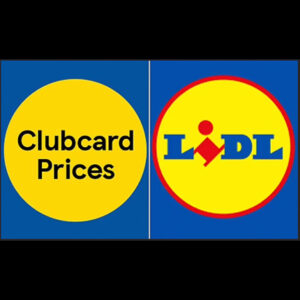
Can you tell the difference?
The big question in the Lidl v Tesco trademark row
Michael Sandys, Vincents Solicitors’ head of copyright and trademarks, explains how this week’s Appeal Court ruling could impact your business.
When is it ok for a retailer to use a yellow circle in a blue square to promote its price promotions?
Never, according to one of the UK’s highest courts, unless your name is Lidl.
Supermarket giant Tesco got a huge slap on the wrist from the Appeal Court this week when it upheld a decision made by the High Court last year.
The original decision found that Tesco’s use of a yellow circle on a blue background to promote its Clubcard prices, was too similar to Lidl’s main brand logo.
Lidl had taken Tesco to court to establish and infringement through the use of the in-store signage. The High Court agreed it was too close to the Lidl brand logo, and said that Tesco could simply have used a different design.
Whether Tesco deliberately chose to use this design and these colours to confuse shoppers or subconsciously remind them of Lidl, we will never know.
But the motivation was of no interest to the judges who didn’t need to hear if anyone was ever actually deceived in practice, it was enough for the signs to simply exist for them to consider the infringement.
What happened this week?
The latest ruling backs up a decision originally taken last year, and now Tesco has agreed to redesign its Clubcard promo materials.
This is a triple whammy for Tesco; a costly loss in court followed by a costly redesign process and a costly roll out of a new Clubcard logo.
It’s also a timely reminder to all of us that the design of a logo should be given more consideration than many people might imagine.
This has cemented the principle that it is not just a company’s main branding which must avoid looking too much like a competitor, but other materials as well – in this case, signage for price promotions.
Tesco might have been hoping the Appeal Court judges would consider this original decision was a step too far.
They did not.
But what about us?
So what does this mean to those of us who are not running the country’s biggest supermarket chains, is there any relevance here for smaller businesses?
The lesson to be learnt is to never underestimate the power of a competitor’s mark and logo. It is an inherent part of any business, its identity, its reputation and the foundation for its marketing.
Infringement of that – in even the smallest manner – could land any business in hot water.
So consider, that cute play on words, or that cheeky nod to a bigger brand’s name or colour scheme might seem clever when discussing ideas with friends and family.
But when registering your business or preparing to launch your new branding, make sure you have consulted an expert who can advise whether this new – or any previous rulings – could result in legal action being taken against you.
Top Tips
- Make sure that any commercial signage you adopt is clearly distinguishable and is as original as possible
- Ensure that you steer clear of any features, including colours and colour combinations, logos or marks that your competitor may have in place
- Use a brand or marketing professional to guide your brand and signage design; those back-of-an-envelope ideas rarely include appropriate due diligence
- Take advice early on, before you commit to approving designs that could be problematic and costly to replace – or defend in court – in the future.
For assistance with copyright and trademarks, or any corporate and commercial requirements contact Michael Sandys on 01772 28 03 29 or email MichaelSandys@vslaw.co.uk